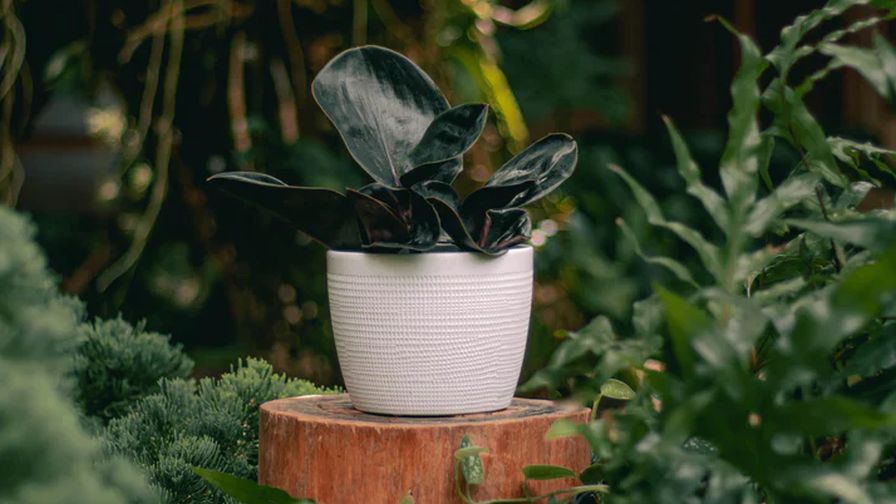Digitals Twins and the Path Toward Greenhouse Autonomy
 If you’ve been reading up on innovations in indoor agriculture recently, there’s no doubt you’ve heard the words “digital twin” or “autonomous growing” mentioned. There has been a lot of momentum around data collection and analysis in our industry. More recently, we’ve seen a number of products that claim to be offering autonomy solutions, and that all starts with a digital twin.
If you’ve been reading up on innovations in indoor agriculture recently, there’s no doubt you’ve heard the words “digital twin” or “autonomous growing” mentioned. There has been a lot of momentum around data collection and analysis in our industry. More recently, we’ve seen a number of products that claim to be offering autonomy solutions, and that all starts with a digital twin.
This is a really exciting world, but it’s also surrounded by hype. The world of digital agriculture is often misunderstood. Especially true is the concept of a digital system that represents the physical world around us, or digital twins.
We put together a primer on what these terms mean, where the industry is at currently, and what needs to happen to get to full autonomous growing.
SCADA Systems
Let’s start with what’s happening now. In a greenhouse or vertical farm, there are a number of systems that collect information on the growing environment. Those systems then feed that information into a centralized database, which allows growers to create workflows based on the information at hand.
SCADA is an acronym for “Supervisory Control and Data Acquisition.” SCADA systems are comprised of hardware and software that allow organizations to understand what’s happening in an environment in real-time and control, from both on-site and remote locations, the environment itself. They’ve been around for decades.
In horticulture, we use SCADA systems for managing climate, irrigation, lighting, and other input systems that affect the plants. For example, climate control systems are legacy systems that have powered greenhouses (and more recently vertical farms) for decades. Growers use programmable logic controllers (PLCs) to interact with sensors, like temperature, humidity, and CO2, to see exactly what’s happening in the greenhouse currently via dashboards. They can then adjust the climate by changing set points for their HVAC systems automatically or manually.
SCADA systems are the first step toward more autonomous systems because they help us understand the present.
Digital Twins
Digital twins are digital versions of the physical world that help us understand not just the present, but the outputs of our system, and the future. If plants were inert, the SCADA systems we have in place today would be very similar to what a digital twin would look like. If we took that data and forecasted into the future, that would be a digital twin. However, plants are biological organisms. They change. So does the environment around them. In order to create a digital twin in agriculture, we have to understand the plants, the environment, how the plants interact with the environment, and how that changes as each variable changes (the outputs). It’s complicated.
It’s helpful to take a step into a world that has made the shift to autonomy using digital twins and AI to understand what we’re working on in agriculture. The autonomous car industry has shown us what’s possible by creating digital replicas of our physical environment. Digital twins help auto manufacturers understand future scenarios based on an understanding of the car, the surrounding environment, and how the car interacts with that changing environment (as well as past and present understanding of those variables). What could happen based on expected conditions? They create a three-dimensional map of the world around us; a map that includes weather, people walking around, city conditions vs highway conditions, simulated traffic, and more. This map is a digital twin. It allows engineers to run simulations to see what the outcome of a given scenario would look like. This then allows AI engineers to train models around the scenarios.
How Do we Make a Greenhouse or Vertical Farm Digital Twin?
Digital twins are difficult to create in a greenhouse or vertical farm. Unlike cars, the plants themselves are also changing over time based on the gene expression from their surroundings. They react differently to the environment, which is also constantly changing. This makes data a fundamental and incredibly important key, especially plant response/output data.
Collecting enough data to make a true digital twin has been a difficult thing to do. Unfortunately, most companies who claim to have developed digital twins have focused on the subset of data that is widely available today: environmental and irrigation data. It’s possible, for example, to tap into the existing SCADA systems collecting and analyzing data related to temperature, humidity, CO2, pH, EC, and other metrics. This helps us understand the growing environment. Some companies are also adding additional sensors to augment their dataset.
Infrared (IR) sensing is a great example of a newer technology we’re just starting to really understand. We can use IR sensing to help us understand plant health, though it has diagnostic gaps. IR can detect chlorophyll bursting, for example, but it doesn’t highlight the reason. This leaves growers vulnerable to the possibility of chlorophyll bursting for bad reasons such as pests or stress, that can then impact the entire system.
IR, or any of the other data points mentioned, are great tools. However, they are still measuring a single point, not all of the system’s characteristics. No one data point or collection of single-point data points are enough to create a true digital twin. These data points are also incomplete. What about plant yield? What about pests? What about disease? They often only offer zones of coverage, not comprehensive coverage, leading to too much leverage for a reliable process. That’s what makes creating a digital twin difficult in horticulture.
So how can we do it? The answer is comprehensive coverage. We need to create a digital version of the plants, the environment, and how the plants interact with the environment. To understand the plants, we can use IR as one indicator of plant health. However, we also need to understand plant growth rates, germination rates (if applicable), and yield.
IUNU’s LUNA system is a comprehensive computer vision system. Comprehensive means our cameras look at every single plant multiple times a day. This allows us to understand the plants in ways humans can’t. We also have a product called Harvest Weight Capture that is part of the LUNA Platform and allows growers to auto-capture the harvest weight of all the plants. So many facilities are not capturing all of the harvest weights because the process is manual and fraught with human error. Harvest Weight Capture eliminates that error by syncing with your scales and assigning the weight to your inventory lot or batch. Combining our imagery with our harvest weights and the sensor data from SCADA systems allows us to understand the plant completely.
The existing SCADA systems allow us to understand the environment. The last piece is understanding how the plant interacts with its environment. We can do this by looking at pest and disease pressure, harvest weights, growth rates, and germination rates. We already talked about how LUNA looks at growth rates and Harvest Weight Capture helps capture harvest weights. LUNA similarly uses plant imagery and SCADA data (environmental, lighting, etc.) to look at past and future pest and disease pressure. This helps us look at not just the plants and the environment, but how plants might react to any given scenario or workflow.
To build proper digital twins, we have to understand every single individual plant. Why? As every grower will attest, one gutter might not react to situations the same as another. One pond, one pot, one table, one row. With all the microclimates, positioning, and irrigation irregularities, they’re all unique, and each plant reacts to its surroundings differently. This is why SCADA systems alone don’t work. Measuring IR or light levels or temperature at a zone or facility level simply isn’t enough to represent the environment and how each plant interacts with it.
IUNU is at this stage – the individual plant level – now. LUNA introduces this third set of data into the equation and is closing the loop on autonomous growing. Growers who want to create true digital twins of their operations can reach out to work with us to build those models. We believe every grower should own their own recipe for growing.
Working Toward Autonomy
Once we have a true digital twin, we have a single source of truth for all of our facility data. That data shows us the past, present, and future of the operation. Remember the car example earlier and how auto manufacturers use the digital twin to run scenarios to understand how cars react to different situations? This is the same for plants. With our digital twin, we can run scenarios to see how plants will grow, what disease or pest pressure they might face, if plants will germinate, and more. Imagine we wanted to test the germination success of a variety with different spacing options for a lettuce variety. What if we wanted to test this same trial with different weather patterns? We can do that with our digital twin.
It’s important that we outline SCADA systems and digital twins before we discuss autonomy. The industry has been talking about autonomous solutions for a while now as if we’re already past the goal. And we’re not there yet. We’re working toward the goal.
We have SCADA systems. We’re starting to get to digital twins. We’re not yet at hands-off autonomy. But we’re close. Once we have true digital twins, we can build the autonomous responses and start controlling our operations using artificial intelligence. For example, once we understand how that plant is going to germinate in the various weather conditions and at various spacings, we can use artificial intelligence to choose that spacing on our seeder and plant the optimal orientation. This is what we’re working toward.
The complete feedback loop then circles back to our digital twin with how the plant actually performed in reality so the digital twin can adjust itself and replay for the growers’ analysis. This adjusts the forecast. This loop allows us to adjust the farm constantly with little intervention in the most optimal way.
Our goal isn’t to own autonomy. Companies are going to build autonomy solutions that address their specific needs. We’re building the engine, the core data set that powers your autonomy solutions.
Our goal also isn’t to replace 100% of growers with autonomy. Instead, we have to provide more tools to allow growers to cover more acreage with less cost and more granularity. Our industry is growing faster than ever before and the population of growers isn’t keeping up. According to Greenhouse Grower, 65% of growers are above the age of 55. Autonomous growing focuses on empowering growers and increasing their ability to affect change and their reach across multiple facilities. To keep up with the pace of the industry, we require granularity. That’s what we’re focused on at IUNU.
To find out more about digital twins and autonomous growing, reach out to our team at [email protected].









